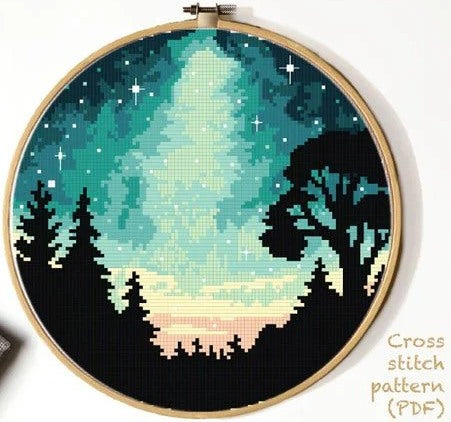My latest release was featured in issue #21 of xstitch magazine with the theme of "tropical." The label from Bob Marley's "Jamming" single posed a particular challenge: getting the color-range gradient right.

Photography by Stacy Grant
Gradients in cross stitching are a tricky beast to design. Since each stitch can be seen with the naked eye, there are no seamless color transitions like there are in computer-generated graphics. The only way to make the stitches seem "smaller" and less obtrusive is to step back from the finished project. Step back too far, however, and you won’t be able to make out the rest of the details in the piece. Cross stitch gradients often come out blocky with clearly defined lines between colors.

This effect can be reduced by borrowing a technique from computer graphics called dithering, which uses similar colors to simulate a color change. Unfortunately, when you use dithering in cross stitching you often wind up with a confetti design requiring dozens of colors of floss, and you still may not have the smooth transition you're looking for.
 Photorealistic-ish
Photorealistic-ish
This Aloha pattern works well given the limitations of cross stitch, but for a design like Jamming, the blockiness of the transitions would distract the viewer from other details in the design.

For Jamming, I used several techniques together for that nice, hard-to-spot transition. First, I carefully chose six different colors to use as we slide from bright yellow to dark orange. Smaller changes in shading make the transition harder to notice.
Second, I added blends. This means that in between the bright yellow stitches and the medium yellow stitches, there is a band of stitches worked using one strand of each color. Now we're going from six bands of color to 11.
Finally, each color band is interlaced with the band above it and the band below it, similar to the previously mentioned Aloha example. This further blurs the changes and causes the eye to perceive a smooth transition.

As you can see, attacking gradients from a few different perspectives can bring on fantastic results. Send me a photo of the next one you work on so I can admire your newfound skills!


